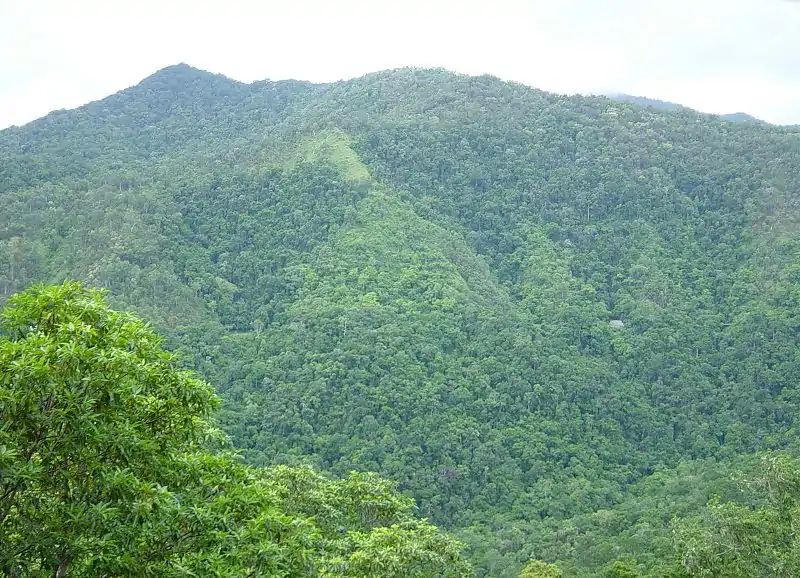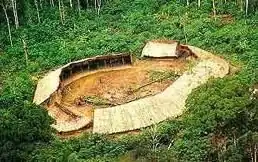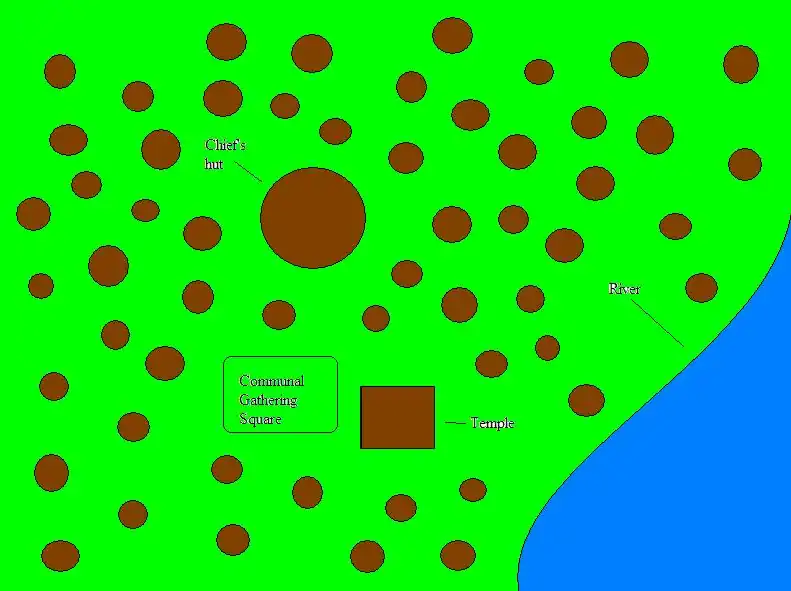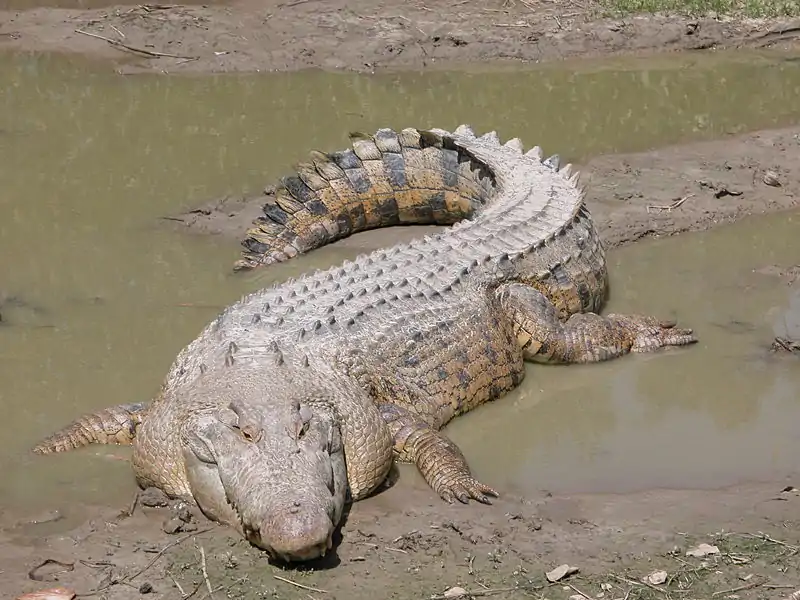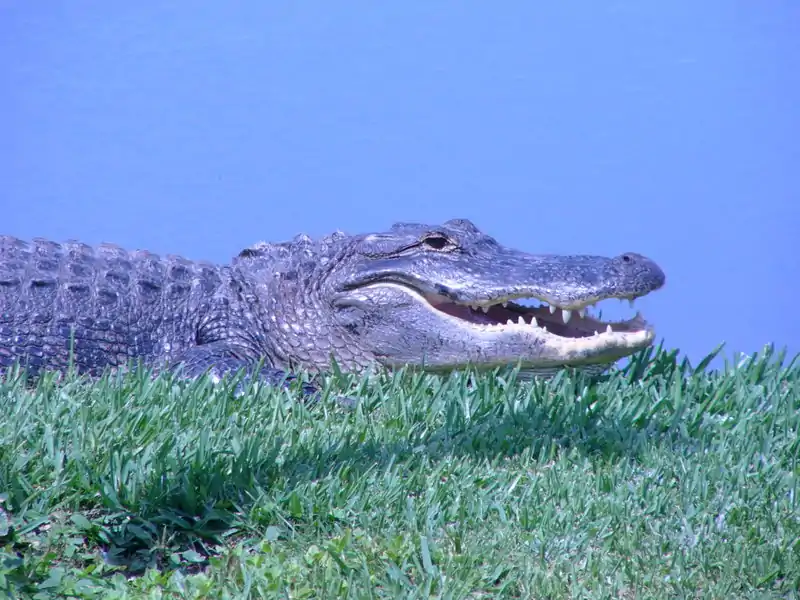Paludia (3.5e Campaign Setting)
| This is complete in many aspects, but information is sparse in a few categories. Please help improve this.
What are the rating guidelines in more detail? |
Introduction
Paludia is the name of a vast, largely wild territory of swamps and jungles in the material plane. The inhabitants of the land are overwhelmingly lizardfolk, and they come in many different species, nations, and forms of development. Some are settled tribes with organized trade and institutions. Others are simple hamlets with mud huts and a chief. Still others are wandering tribes. Some don't have villages or tribes at all. All groups share three things in common: a non-human outlook on life, a non-agricultural method of obtaining food, and above all, a system of patriarchy.
History
Paludia has had some form of sentient life for well over ten thousand years; far longer than that by some definitions of sentience. In that time, villages, kingdoms, and even empires have risen and fallen. See History of Paludia (3.5e Campaign Setting) for more information on Paludia's history.
Climate and Geography
Paludia is an enormous, sprawling area filled with swamps and jungles. Shaped roughly like a square, the length of Paludia over 10,000 kilometers from north to south and east to west. Most parts of Paludia are unsettled, and geographic regions cover the map more often than political boundaries. A few mountains ranges and hilly areas exist at various points, although most terrain is fairly flat. The highest mountains are only about 5000 feet tall, and only occur in a single range which is just north of Paludia's center.
Paludia is bordered by mountains to the north and south, with many passes through them. To the east and west lie vast oceans.
The only serious diversity of terrain is that of the difference between swamp and rain forest. While both are very hot and wet, there are a few differences. Marshes tend to be more open and although it is still muddy and hard to travel through, at least the terrain is fairly clear, and one's line of sight isn't too badly obstructed. Jungles, by contrast, tend to be very dense in this land, and progress through them can be difficult indeed. It is also more difficult to see or hear enemies approaching in a rain forest than it is in a swamp.
Water is common as well, and dozens of rivers and their tributaries can be found in Paludia, along with countless lakes, ponds, streams, and underground waterways. Knowing how to navigate the waters can be very important, as riverine travel is the fastest in Paludia.
Harsh weather is common to Paludia, especially torrential rain. Flooding is a constant danger.
The temperature in Paludia is always warm, and during the summer, can become very hot indeed. Checks against heat may have to be made, depending on the location and season.
Equipment and Preparations
Below is a list of some of the useful equipment and supplies for a party to bring on any adventure in Paludia:
- A backpack
- Rations
- Flint and Steel
- A length of good rope
- A flask of clean water
- Armor that is protective, yet lightweight; the hot, wet environment can make wearing heavy metal armor difficult.
- Cash; prices in Paludia are generally lower than in other lands, but an extended adventure can still be expensive.
Before setting off on an adventure to Paludia, the following skills are quite useful:
- The Survival skill is important to stay alive in the wilds of Paludia, as there are perils in many, many places, and the wilderness is harsh and unforgiving. This is the most important skill to possess in Paludia.
- Knowledge of Draconic; the lizardfolk speak this language, so the party ought to have someone who knows it. If that is not an option, Tongues or Comprehend Languages are excellent spells to have.
- Knowing how to use a rope can help parties in many situations, such as having to tie a rope to a tree and climbing up the rope.
- Knowing how to treat wounds is important, especially considering the lack of hospitals and doctors. The heal skill is very important for treating poison and disease, both of which are common in Paludia.
- Bodies of water are common, so knowing how to swim can be vital to a party's success.
- Knowledge of geography is important, as is knowledge of local customs, as well as knowledge of nature, which is so abundant in the wild land.
- As is common in many lands with many xenophobic tribes, Diplomacy is important to prevent unnecessary and pointless bloodshed.
Some basic advice for those traveling in Paludia:
- When staying at an inn, expect the food to mostly consist of meat and fish; neither grain nor dairy products are produced in Paludia. Also, almost all meat is caught straight from the wild; domesticated animals are rare.
- Boil water whenever you can; the water quality is generally bad.
- Don't hide under a tree during a thunderstorm, as lightning tends to strike the tallest object in range.
- Don't get in a fight in a crowd with a lizardfolk, especially if you are not one of them; humans and others are treated with suspicion, and a crowd of lizardfolk will likely attack the human regardless of the situation.
- If you are desperate for food, insects are a good source of protein.
- When traveling through crowd of lizardfolk, make sure not to step on or trip on any tails.
- Keep a knife on you at all times; all experienced travelers know how useful this can be.
- If you enter a particularly religious village, it might be wise pay homage to Semuanya; his shrines can be recognized by their stone architecture and central importance to a village. A statue of him appears as a lizardfolk armed with a great club with sharp shells at the tip. He is a neutral deity in all ways, so no major deity you worship ought to be offended.
- Iron and steel items rust easily in Paludia; even so, the durability of metal is worth much in this realm.
- Wildfires are a threat in some parts of the land.
- If you are selling anything in Paludia, some items which fetch a higher price than one would expect include articles of glass, metal tools, and meat from domesticated animals.
Nations, Tribes, and Society
The tribes can be organized into many categories, some of which overlap:
Tribes and Clans
There are many different tribes, villages, and clans in Paludia. See here for more information.
Leadership
- Chief: A chief rules this tribe with his own authority as the last word. This is by far the most common type of leadership in Paludia. See here for more.
- Shaman/Druid/Mage: A Shaman or other magic user may run this tribe, but doesn't necessarily have absolute control, although this is usually the case.
- Chief/Shaman: The Chief and Shaman split control of the tribe, but the Chief usually has more power. Sometimes, the chief is a shaman, and the powers of both positions are vested in one individual.
- Council: While there is always a main leader on top, some rare tribes have several major power-brokers. These tribal councils often have the chief, the strongest fighter (if it isn't the chief, it's usually one of his sons), an influential druid who commands a cult, a Sauromancer who is a force in his own right, and a shaman who commands the respect of the common lizardfolk. Lizardfolk females are never on a council. Even in a government with a council, the chief almost always has or much as more power than the council.
- Monstrous: A monster (usually a black dragon) rules the tribe. The second-in-command is often a black half-dragon lizardfolk. The monster leading the tribe is effectively a chief, and may even take that title officially.
- Priest king: A system of leadership in the days of the old kingdom, the King was the great authority over many villages. The key to the success of this form of government is its ability to link the temporal power of the king with the eternal power of the divine. Of course, if the power of one should falter, the other will quickly fall down. Some tribes still use this form of government, but with significantly less success than the days of the first king.
- Other: Given the diversity of Paludia, it isn't surprising to find a form of government which doesn't neatly fit into any of the categories above. Some very rare tribes operate using councils and popular input.
Economy
- Hunting/Fishing: A tribe who's livelihood is dependent upon animal meat from the wild, these tribes have a simple economy which is capable of acquiring food and producing tools and weapons, but little else. Nevertheless, these tribes occasionally sell animal hides when merchants come around. Tribes of fishers also exist, but these tribes have very little to trade and are poor even by lizardfolk standards. Only if a fishing village is located in a good area to trade along a river will it even have the chance of prospering.
- Trading/Services: Some rare migratory tribes have been able to make a living off of trading goods. These tribes are sometimes welcome, for they bring items from far-away lands, but other groups wish to cast these traders out, for they are often perceived as profiting from other people's work. Some commonly traded goods include food, metal, weapons, tools, dyes, medicinal herbs, salt, wood, perfumes, and pottery. There also exist some traveling slavers and mercenaries, who come to sell their "good" of living cargo or else their service of war. Other service providers include guides, scribes, and teamsters, but all of these are very rare to find (although it might be possible for a party to hire a lizardfolk as a guide, without it being his vocation.)
- Industry/Crafts: Only about 10% of the tribes have access to metal-working skills, and even these tribes have crude knowledge of metallurgy at best. Some skill in carpentry and pottery exists as well. Even so, many goods which the more advanced lizardfolk tribes demand have to be imported from human lands. The most valuable Paludian industries are overwhelmingly extractive, and a few tribes have access to valuable salt marshes, which are worked on by slaves. On the whole, there isn't much industry in Paludia. Some other crafts besides carpentry and pottery exist, but these are very limited in most areas. The lizardfolk generally have neither the patience nor the intelligence to excel at most crafts, and the lack of markets for such crafts limits the incentive to increase productivity and quality.
- Agriculture/Animal Domestication: The Paludian lizardfolk have very little agricultural skill; they cannot survive on vegetable matter, and the Paludian soil isn't good for growing grain or root crops. Still, a few lizardfolk do grow some minor plants, such as flowers, medicinal herbs, or plants which have useful dyes. These operations tend to be very small. Paludia also has some very limited animal domestication, usually of certain kinds of reptiles whose meat and hides are to be sold. The lack of good pasture land prohibits the raising of cattle or sheep on any significant scale.
For more, see Economy and resources.
Society
Lizardfolk society is hierarchic, with the chief or other leader on top, a mage or shaman below him, the tribes greatest champion (the greatest fighter other than the chief) below the shaman, and the rest of society below the greatest fighter. In the same class, males are always above females, and no female has ever ruled a tribe. If the chief dies, the eldest son takes control. If the chief has no sons, the shaman (if any) may take control, or failing that, the strongest fighters will compete for control. The lizardfolk are generally polygamous, and a single male can take multiple wives. However, since he must support each wife he takes, an average lizardfolk male is unlikely to have more than one wife at a time. Only a plurality of tribes actually have a concept of true marriage; many tribes simply have couples pair up unofficially, or else only meet for limited amounts of time for the purpose of procreation.
For more information on lizardfolk society and daily life, see Paludian lizardfolk culture.
Warfare
War is a never-ending fact of life in Paludia. Almost every tribe is prepared for a fight at all times. Mostly, the wars are endemic, low intensity fights; it is quite rare for a major battle or massacre (1,000 + casualties on all sides) to occur. Casualties from a conflict between two tribes rarely surpass 100 on each side. War is a major factor of Paludian life and is far too complex to cover in a small subsection. See here for more.
Language
The lizardfolk speak a language that is descended from draconic, and is labeled as such. While many dragons would consider the lizardfolk language some ignorant excuse for draconic, it must be noted that the essentials of the language are present in the lizardfolk speech patterns (it might be consisdered "vulgar draconic"). In recent times, the common language is becoming more widespread.
Biology and Species
In addition to different tribes of lizardfolk, Paludia has different species as well. While regular lizardfolk make up the plurality of the population, different species and subspecies live in the swamps and jungles as well. All lizardfolk are capable of interbreeding, resulting in various population mixes. Some tribes even have multiple species living under the same chief.
Lizardfolk biology differs greatly from that of most other humanoid races. See the Paludian lizardfolk biology section for more.
Besides the common lizardfolk some species include:
- Crested Lizardfolk
- Torvadian Lizardfolk
Religion
This section contains a brief overview of Paludian lizardfolk religion. For more information, see here. For how religion relates to Paludian culture, see here
Deities
Paludia has a few main deities:
Semuanya: He is the principle god of most lizardfolk. Sacrifices are made to him every month. His principles are those of survival and propagation; he is not a god of morality or ethics. The great Bog where Semuanya dwells can be found on the neutral plane of Concordant Opposition. Semuanya's priests wear blue-green hide kilts. His sacred animal is the alligator. His holy day is the full moon and he is worshiped at stone shrines. Hunting prizes are sacrificed to him monthly. The symbol of Semuanya is a single reptile egg.
Sess'Innek: Sess'Innek takes the form of a six-armed lizard king with brown vestigial wings. Each of his six hands wields swords of potent magical power. Little is known about the demon lord Sess'Innek except that he created the lizard kings, chaotic and evil versions of the usually neutral lizardfolk. Sess'Innek dwells on the seventh layer of the Abyss, known as Kearackinin, or the Phantom Plane. Furthermore, Sess'Innek has sealed and "locked" the layer so it cannot be accessed to without his expressed permission. It is said that Sess'Innek was tired of the Blood War, and went into this self-imposed exile, having nothing to do with the politics of the Abyss.
For more information, see Deities of Paludia.
Temples and Shrines
Lizardfolk temples tend to be built out of whatever materials are available in the surrounding area. As a result, most of them are simple structures made out of wood. Semuanya's shrines are often made out of stone, however. The great temples of the old kingdom are the largest exception to the rule that Paludian temples are simple, as they are some of the more elaborate temples in all of the lands.
Cults
In addition to the mainstream deities worshiped by the lizardfolk, several other deities, whose worship was sometimes introduced from abroad, are present as well. Many of the followers of these cults can be found in larger settlements, where foreign merchants and missionaries are more common, and where ideas and beliefs are exchanged. None of these cults are very large, and few are likely to grow to any significant size. All of them combined couldn't challenge the standing of Semuanya. Among these deities are:
The Dragon King: He has a limited following, mostly confined to lizardfolk living near dragon lairs. He has a few scattered shrines and only a couple of small temples. In Paludia, there isn't enough wealth for his temples to have any banks or any significant deposits of treasure, but a few minor artifacts can be found in his Paludian temples.
Quintessa: Her popularity is mostly confined to upper-class lizardfolk females, especially those who live in the more developed areas (areas within 500 kilometers from the town of Lixus and with over 1,000 people living in and around the settlement.) She has but a single temple in Paludia, located in a rich village near Lixus.
Salavr: His name is usually whispered, as only assassins and killers of the lowest sort follow him. In Paludia, his followers are in the hundreds. Nevertheless, his influence is much greater, as the assassins who follow his path have been known to set whole regions into disorder.
JuWell: Her worship is mainly concentrated in trading towns and villages, being very rare in the majority of villages. She is a popular deity for the females, but has very few, if any, male followers. Currently, she has only a handful of small temples, and only about 20 towns have any significant followers of hers at all, but there are signs of growth, especially as trade spreads throughout the land.
Kuluth: Mostly worshiped by merchants, Kuluth has only two temples in Paludia. He is considered by his followers to be quite important, as he can keep them safe from an untimely death, which can occur in the lawless countryside of Paludia. Since merchants are often exposed to such lawlessness, divine protection may be needed to keep them (and their goods) safe. His two Paludian temples are fairly large and rich, due to the fact that merchants tend to be richer than the majority of the population.
Adventuring in Paludia
When adventuring in Paludia, the landscape itself is as much an obstacle as the enemies. Swamps, quicksand, dense foliage, dark jungles, deep rivers, biting insects, and oppressive heat are all factors to content with. Common terrain includes marshes, tropical rain forests, and many bodies of water. Knowledge of nature is a major asset, as is the skill of survival. In certain areas of Paludia, disease can afflict adventurers. The exact saving throws to resist disease can be determined by the DM.
Magic of Paludia
The magical skills of the land of Paludia vary greatly from place to place. The level of skill varies from the crude magic of the shamans, to the highly sophisticated spells of the sauromancers. Generally speaking, the lizardfolk's magic revolves around magics of nature, water, and death. Some skills in fire magic exist as well.
Important Locations
Swamp of Pythons- This swamp attracts an unusual number of large snakes to it for some unknown reason. Some mages have scanned the area for magic fields, but have found nothing.
Marsh of Acheron- This marsh connects to the river Acheron; a river of the underworld. Only dark mages or brave adventurers should go here. The black waters of Acheron are dangerous, and mix freely with the waters of the swamps. The exact rato of swamp water to Acheron water get greater as the party gets closer to the source of Acheron, and more dangerous. As the party gets very close to the source, the marsh ends and a black river is seen flowing out of a great cave. In the cave, the river Acheron is seen flowing out of a one-way portal into the marsh. If the party enters the portal, it will be transported into The Infernal Battlefield of Acheron, and the portal will not let them out, as only the river can flow through the one-way portal both ways.
The Sacrosanct Swamp- An important area located in the southwest of Paludia, this swamp was said to be the place where Semuanya first set foot in the Paludian landscape. As a result, yearly rituals are performed on this site. The ground is far too unstable and water-saturated for building a temple on, but the land is considered to be holy nonetheless.
The Great Temples- In the days of the first king, there were a number of temples built to a variety of deities. These temples were said to have been built with the help of each temple's respective deity, and as a result, a fraction of their essences remains in the temples.
The Tomb of the First King- Before his reign was even half over, the First King of The Old Kingdom made preparations for his entombment and possible return. He ordered his Sauromancers to prepare the greatest tomb in all of Paludia, and one of the greatest tombs ever seen in the entire world. A great cave complex was found deep in the mountains, where few lizardfolk ever tread, and enchantments were cast upon the caves, preventing most spells from affecting them. Most Scrying spells were blocked, and the few that could get through were given a false image of an empty mountain. The cave itself was filled with great treasures and magical artifacts, including some high-powered magical weapons, amulets, and special artifacts which could be used by the First King should he ever be reanimated. The Tomb was then covered in symbols, both magical and religious. The exact meaning of these symbols is unknown to all but the Sauromancers and the First King himself. After the First King had died, he was outfitted with a jade mask, and his tomb was filled with many traps, both magical and mundane. Other obstacles were placed in the tomb as well. After the tomb had been filled and outfitted, it was sealed up. No written record of the tomb's location exists in any lizardfolk village or town. In fact, no living Sauromancer knows where the tomb is either. Every now and then, a lizardfolk warrior or chief tries to find the tomb, hoping that the artifacts inside will enable him to claim rulership of all Paludia. No expedition has ever come close to finding the tomb, and even if the tomb could be found, it would be very difficult to unlock its secrets.
The River of Pain- A river whose banks mark the boundary between the relatively civilized areas to the south and the wilder areas to the north. It has been the site of many battles and is called the river of pain because of the high casualties suffered on each side.
The Town of Lixus- The largest lizardfolk settlement in all of Paludia, this town of over 5,000 inhabitants is a major trade center. Lixus also controls the closest thing Paludia has to an empire; a kingdom which controls land far away from itself.
The Island of Semuanya- An isle which is dominated by a temple dedicated to the chief deity of the lizardfolk. The ancient temple was built during the reign of the first king. This temple is unique in that it's still active and functioning at the same level as it was during the king's reign. Time seems to have had little to no effect on this island, and the social order of the tribes is the same as it was thousands of years ago.
The Valley of Blood- Arguably the most depraved place in all of Paludia, this cursed valley is home to a blood-cult of lizardfolk who believe that nature requires mass sacrifice in order to sate it. The cult falsely believes that if enough blood isn't spilled, nature will go berserk. The irony of the situation is that the spilling of blood during magical rituals by the cult has actually caused the very natural deviancy that it sought to prevent. Of course, the lizardfolk have little to no knowledge of Etiology (the study of causation), and so they believe that what they said about nature going wild was actually true before the blood rituals ever started. The flora and fauna of the Valley of Blood are aggressive beyond belief; even the vines seek to strangle adventurers making their way through the woods. The animals show signs of mutations, including some terrible, bizarre mixes of limbs and claws and tentacles on all sorts of animals which should never be. Fortunately, the valley is very isolated and not very large.
Mountain of the Shaman- A mountain where an ancient Shaman is said to live. It is said that old secrets of magic can be found here.
Caves of the Druids- A vast cavern in which lizardfolk druids gather every few years.
Mixian Marsh- A sub-section within Paludia, there is said to be a hidden land of much fertility within the marsh. The only problem is that the marsh is over 200 kilometers in diameter and there is little animal life for travelers to hunt, and even less for armies to forage. If there is a hidden land inside of the marsh, it would be near the center of this circular marsh.
Swamp of Sickness- Anyone who crosses this swamp is at increased risk of sickness.
The Ecclessium- An monestary and chapel complex set up by missionaries hoping to find converts in Paludia.
The Tel City- The ancient capital of the old kingdom, this ruined city contains many old temples and other structures, but is extremely dangerous to enter. After a horde of dragons destroyed the city, they fought each other over the spoils, and most of them died in the ensuing conflict. Today, the city is a dragon graveyard, with some great wyrm dragons still alive, asleep on their spoils, and apathetic to the world around them. The draconic descendants of the original attackers are also still alive, and, as a testament to what had happened, many half-dragon lizardfolk are counted among them. Magical fields from the temples, residual energy from the conflict, improperly stored magical artifacts (many of which leak magical and radioactive energy, although no one recognizes it as radioactive as of yet) and magic from the dead bodies of the dragons have combined to make the area very unstable.
Adventure Hooks for Paludia
Here are just a few of the many adventures* possible:
- Two lizardfolk tribes go to war over a dispute concerning food and water, and the party can choose to aid one side, neither side, or even both sides!
- A radical crocodile-worshiping lizard cult is growing in influence and religious war threatens the countryside.
- A migratory tribe of crested lizardfolk has accidentally woken a Wyrm Black Dragon.
- Reports of the spectre of a long-dead shaman have been received.
- A map to of what appears to be the tomb of the first king has been found. Is it genuine?
- Thousands and thousands of monitor lizards are gathering in an abandoned village. Why?
- The weather is becoming unnaturally hot, even for Paludia. Why?
- The consort of a powerful chief has run away and he wants you to find her. Why did she run away? Where did she go?
- A dying mage gives you his amulet. Suddenly, you are followed everywhere by lizards.
- The body of a Torvadian champion who fell in combat has to be taken home.
- Recently, there have been sightings of ghostly animal spirits wandering through the swamp. Could the local conclave of shamans have anything to do with it?
- A green half-dragon lizardfolk chief's forces have been devastating the land. Will you choose to fight him or seek out those who say they can?
- Acid rain inflicts serious damage on dozens of villages. What's the cause? How can the acid rain be stopped?
- A giant crocodile has carried off the princess of a small lizardfolk kingdom.
- Human bandits are raiding lizardfolk villages.
- Lizardfolk bandits are attacking human merchants.
- A hidden cache of ancient knowledge has been disturbed, and suddenly, strange beasts appear out of the swamp.
- An old lizardfolk druid asks you to help stop bandits from looting an ancient temple.
- A lizardfolk chief seeks the capture of a dangerous assassin.
- A major plague with a magical cause is sweeping across the land.
Quests
Here are just some of the many quests that are available in Paludia:
- Bandit fight: Some bandits have been causing trouble near a village, and your party is offered payment to stop them. Intended for party levels 1-2.
- Lost Artifact: A shaman has lost a valuable ancestral mask and needs the party to find it. Intended for party levels 3-4
- Runaway Bride: A young bride promised to the leader of a powerful tribe has fled the village and the chief wants her back. Intended for party levels 5-6
- Great Migration: In order to survive, a tribe requires the help of adventurers to reach the mysterious promised land inside of the Mixian Marsh, if it even does exist. Intended for party levels 7-8.
- Dragons of Paludia: It's well known that dragons are prideful, covetous, and vain, but what happens when such qualities go too far? Intended for party levels 9-10.
- Lixus Intrigue: Unusual events have been happening in the largest town of Paludia. See what can be done to set things right. Intended for party levels 11-12.
- Tribal Warfare: A no-holds barred struggle deep in the jungle. An excellent quest for those seeking a good, old-fashioned fight to the finish. Choose one of two sides, or, for an extra challenge, fight both. Intended for party levels 13-14
- The Hunt: Assist a lizardfolk tribe in is hunt for a dragon. The beast is said to have wrecked a village, but is all as it seems? Intended for party levels 15-16.
- Heat Wave: The temperature is increasing daily; even for Paludia, it is very hot. Your party needs to find out why. This adventure frequently makes use of heat-based environmental hazards, so plan accordingly. Intended for party levels 17-18.
- Tomb of The First King: The ultimate quest for Paludia! Unlock the oldest, most hidden secrets this exotic land has to offer. WARNING: This is an ultra-difficult quest and should NOT be attempted by any save for the most powerful parties. Intended for party levels 19-20.
Specially adapted for 4e, The Secret of the Sauromancers is a special-level quest which can be adapted to fit parties of many levels, if need be, depending if one wants to discover the secret, protect the secret, or destroy the secret.
Creatures of Paludia
In addition to lizardfolk, Paludia has many different, diverse beings. Some of which include:
- Eleionomae, nymphs of the marsh.
- Crocodiles and their larger cousins. Some crocodiles of even larger size than giant have been found: . Crocodiles of such size as these are believed to have long died off in most other lands.
- Giant Frogs who emit poison.
- Bog Beasts, giant creatures composed of swamp matter who emit poison gases and can spit venom.
- Sacred Serpents, raised in tunnels underneath of large temples, these serpents have been known to aid lizardfolk priests.
- Black Dragons and Green Dragons.
- Lizards of many varieties including monitor lizards as a prominent species, as well as the occasional shocker lizard:
- Wyverns
- Hydras, which frequently cause problems to weaker lizardfolk tribes.
- Snakes, which are as common as rats in some parts of Paludia.
- Shamblers.
- Will-O'-Wisps
- Catoblepas, bulls who live deep within the swamp whose gaze means death.
- Nagas, even though these are quite rare.
- Cerastae, horned serpents with a deadly poisonous bite.
- Rakshasi, although they are very rare and are only spotted once every few years.
- Manticores
- Sirrushes
- Locathahs, which dwell in waters off of the coast of Paludia, near the ocean.
Classes and Templates of Paludia
The favored class of the lizardfolk is said to be the druid. This is so because few other lizardfolk are usually willing to become adventurers; most others are bound to their tribe or else have no interest in leaving the confines of their swampy home. In Paludia, the druids are all male.
Apart from adventuring parties, lizardfolk are likely to be termed barbarians or else simply be simple hunters with no special skill. Regular fighters are quite common as well, especially in a chief's retinue. Basic village guards are usually members of the warrior NPC class. Local mages are often adepts, especially if a village only has one individual who is intelligent enough to understand magic at all.
A few notes are needed to address the other base classes. Paludia has relatively few lizardfolk who might be called rangers. Skill with a bow and arrow isn't rare, but it is rare that a lizardfolk would go off on his own and wander through the wilderness, especially if this means violating the territory of other tribes. Monks are very rare in Paludia; the few that exist are able to make use of their tail and clawed limbs in combat. Generic wizards and sorcerers are essentially all under the categories of Sauromancers and Marsh masters. Rogues are common in places with newfound trade income. Bards are rare, only appearing in any numbers near trade centers, where they can profit off of the demand for music and other entertainment; interestingly, about one fifth of lizardfolk bards in Paludia are female (a higher percentage than the other classes.) The role of cleric is essentially filled by that of the tribal shamans and the priests of Semuanya; they are of the cleric class but are restricted to males only is something that hasn't changed since the fall of the old kingdom.
The physiology and mindset of the lizardfolk has enabled them to have different abilities, strengths, and weaknesses than the standard humanoid characters. These differences are reflected in the classes and templates available for them:
- Sauromancer: These ancient wizards are the epitome of the lizardfolk mages. Sauromancers come in two varieties, black and red. The black-robed Sauromancers are devoted to the powers of life, death, and rebirth. They have complex initiation rituals and follow a strict set of guidelines. The red-robed Sauromancers are mages of fire and death. Their task is to wield the powers of the dead from long-forgotten tombs. They will only raise the dead from the tombs in times of great crisis. All Sauromancers are part of one of two religious orders, but only the red-robed Sauromancers wield priestly powers. There was ever only one female Sauromancer, and it's unknown if she is still alive.
- The Sauromancers take their work very seriously, and the slightest infractions of their strict rules carry harsh penalties. The code of conduct is very harsh, and on rare occasions, there is a runaway who may have snapped under the pressure.
- Saurolich: The dried husk of a Sauromancer who preserved his soul inside of a phylactery, just like a normal lich would. The ritual necessary to create a Saurolich is a closely kept, forbidden secret; even among Sauromancers, the knowledge is very rarely known. This is so because those who do know the secret are loathe to share it. Needless to say, there are no female Sauroliches, never have been, and likely never will be. This template is limited to Sauromancers only.
- Sauroliches are very rare, and most of them have since left the order of Sauromancers in order to pursue the secrets of lichdom. A few Sauromancers see lichdom as the key to the eternal survival of their race; most Sauromancers wisely reject this extreme path.
- Marsh Masters: Not all lizardfolk wizards are members of a religious order. The marsh masters have powers of death, nature, and water, and lack the religious conviction of the Sauromancers. They are a relatively new order, and like most, comprised totally of lizardfolk males. As magical knowledge spread with the increase of trade, the Sauromancers lost their near-monopoly on high-powered magics. The Marsh Masters are a loose order consisting of various mages, many of whom have different skill sets.
- Serpent Dancers: These cultic dancers inebriate themselves on snake venom and dance around with their magic, poisonous snake staffs. Among lizardfolk, dancing is considered a female vocation, but these cultists are the sole exception; they are the only males allowed to take up this vocation because of the expectation that they will be exposed to combat. This order is all-male.
- Empoisoner: These lizardfolk are the assassins of choice for lizardfolk chiefs, warlords, and other powerful figures. Generally hailing from the more developed sections of Paludia, they are skilled in assassination and magic. It is believed that these are all male, but it isn't beyond the realm of possibility that a very rare female from a less developed area might be recruited for certain special missions, especially if the victim isn't expecting it...
- Priest: The clergy of the old kingdom, this all-male order is supposed to maintain the positive relationship between Semuanya and the lizardfolk. They are supposed to be as self-sufficient as possible, and the order maintains heirodules (see below) in order to produce as many new priest-recruits as possible.
- Heirodule: This class is only available to the female lizardfolk, and is one of the only classes that they have any skill in. This class is based on priestly spells with no offensive capability. As a result, these female lizardfolk must stay out of close combat, and serve as a healer/enhancer. Their main goal is to lay eggs at the temple they live in, and raise new generations of priests. Many hierodules, sadly, are temple slaves, but those which come from a higher background are rarely enslaved, and are instead made into free consorts of the priests of the temple. Due to the training needed to become a user of divine magic, the hierodule females don't suffer from the normal female lizardfolk reductions of -2 intelligence and -2 wisdom, but this only applies if their first class is that of a Hierodule.
- The divine magic used by the Hierodules is based on emotion and feeling, so being able to process empirical knowledge (intelligence) or knowing eternal truths about the universe (wisdom) is largely irrelevant. The training needed to be a hierodule consists of using emotions to control divine (not psionic) magic, a rare method of control indeed.
- Keeper of the Tombs: A very rare template, a keeper of the tombs has skills in both divine and arcane magic, and is chosen from the ranks of the priests by the Sauromancers to protect and maintain the tombs of the late monarchs of the old kingdom.
- [Shaman: A common practitioner of magic, shamans are the basic religious figures of the lizardfolk. Shamans-in-training or other minor mages are termed adepts. Shamanic magic works by utilizing the power of spirits, along with some minor amounts of internal magic that the shamans themselves possess. Almost all Shamans are male, but there are a few female Shamans of lesser ability.
Lizardfolk feats
Basic feats are listed below:
Tail strike: 1d3 damage. Requires: Lizardfolk, Dex 15, Str 15.
Other Races and Creatures
The lizardfolk make up the overwhelming majority of Paludia's inhabitants, but a few other races exist in Paludia as well.
Dragons: Having had a presence in Paludia for countless centuries, dragons have taken to calling some parts of the land as their territory. The dragons exist in large numbers, but are rarely active, even less so than is usual for dragons. In theory, as much as 5% of Paludia is claimed by dragons, but in practice, only half of that is dragon territory.
Humans: A recent arrival to Paludia, humans come as visitors, merchants, adventurers, explorers, and on occasion, criminals. A few human clerics have come as missionaries to the lizardfolk as well. The lizardfolk sometimes resent humans coming to their land, but know that human states are dangerous to oppose and are better to trade with than to fight against; of course, this does not mean the lizardfolk would oppose attacking an individual human or a small traveling band.
Troglodyte: Brought in by dragons to act as menial servants and laborers, troglodytes have a marginal presence in Paludia at best.
Kobolds: Like the Troglodytes, Kobolds were brought in by dragons to work for them. Their numbers are very limited.
Characters
Saarrl: A very basic, run-of-the-mill lizardfolk hunter; Saarrl is perhaps the most average lizardfolk there is. Like almost all of the other members of his tribe, he lives in a straw hut, with his wife, son, and daughter. He hunts in the day, and usually brings back more than enough for all. His possessions are few, and his hunting spear is the same weapon he has used whenever he has been called to war or to defend the village. Aside from the spear, Saarrl owns a little stone idol (nonmagical) taken from a raid on a rival village, a clay pot, a few pieces of cloth, a stone knife, a couple of spare spearheads made of stone, and a straw mat. Like most lizardfolk, Saarrl rarely takes part in the money economy, and barters for goods.
Soga: The favorite wife of the chief of a fast-growing village, Soga lives a life of comfort. Of course, she was much happier with her family in the small migratory tribe she was a part of. That was before her present husband and his warriors ambushed that tribe, killed the warriors, and took Soga as an almost literal trophy wife. She leads a secret life as a sorceress, unknown to the chief. Currently, she is content in her position as the chief's favorite, but she is planning to polymorph him into a newt and run away when he inevitably gets another favorite. If she is caught planning or committing this deed, she will likely be tried in an unusual way (possibly weighed against an animal to determine guilt) and likely burned for treason.
Ekiti: A black-robed sauromancer in training, Ekiti has yet to undergo the last of his three rites of initiation into the order. He has so far passed the first two rites and has been given the title of reborn, after he was symbolically killed, entombed, and resurrected. He is more than somewhat nervous about the final test, the rite of the three gates, in which he is taken to an portal to the underworld, which he must pass through. Once in the underworld, he must immerse himself in the black waters. Should he return, he will be given a crown and be made a full sauromancer. If he were to take the test today, he would fail, but he is improving.
Games in Paludia
Click here if you have used this setting and wish to share your experiences in it with others.
Back to Main Page → 3.5e Homebrew → Campaign Settings
